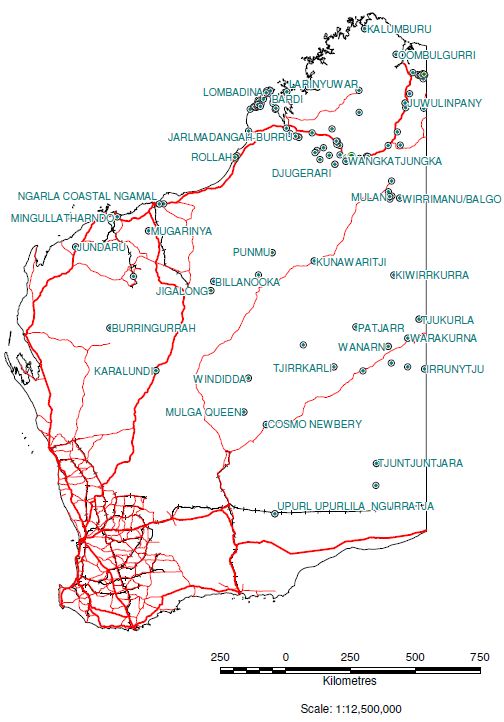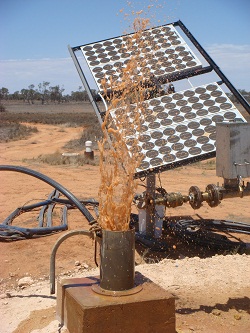Tjuntjuntjarra Community Water Supply

Increasing Community populations and aspirations generate an increasing requirement for safe water supplies at Indigenous Communities. Water is critical to initiatives providing opportunities for young people through Community enterprises, development and tourism.
Our team specialises in exploration for and assessment of groundwater resources and subsequent development of those resources into sustainable water supplies for Indigenous Communities. Since 1998, Global Groundwater has increased water supplies or provided management solutions at over 125 Communities throughout Western Australia.
In our vast state, these projects have included many and varied geological environments from Pre-Cambrian fractured basement rocks to deep Phanerozoic sedimentary basins or shallow Cainozoic superficial sequences, each with unique challenges.
At Tjuntjuntjarra Community on the northern Nullarbor Plain, water supplies are drawn from one very thin lens of fresh groundwater underlying the base of a shallow circular depression in the surface of the plain known as a "donga". The groundwater lens lies about 20m below the donga floor, is less than 10m thick and is underlain and surrounded by saline to hypersaline groundwater unsuitable for human consumption.

The groundwater lens is recharged periodically when rainfall is sufficient to cause significant runoff to enter the donga where it can infiltrate down to the lens through cracking clays in the floor of the donga. With an average annual rainfall of less than 150mm per annum, recharging occurs only once every few years.
Maximising the possible draw of fresh groundwater from below the donga, while minimising the influx of hypersaline groundwater from the peripheries or through upconing, and controlling the concentration of other chemical constituents in the delivered water supply presented some challenges.
Our investigations resulted in an estimate of the volume of the fresh water resource contained within the lens and the potential annual safe draw. Within those established limits, a program of test pumping - which included monitoring waterlevels and profiling water quality against depth - was executed to determine pump depth settings and discharge rates for each bore.
Using this information, a network of air displacement pumps was installed; each pump at a specific depth tailored to the bore. The air displacement pumps effectively "skim" low salinity groundwater from near the top of the fresh groundwater lens while fixing the maximum drawdown possible in the bore to prevent over-pumping from degrading the quality of groundwater in the lens.

Other Community projects have incorporated conjunctive groundwater-surface water systems, groundwater source protection plans, numerical computer modelling, bore re-sleeving, acid treatment and bore-rehabilitation, geophysical surveys for groundwater exploration, drilling and testing. The range of activities has been large and in all cases to date the programs have been successful in improving the security of water supplies.
Projects typically incorporate an exhaustive preliminary phase of acquisition, synthesis and assessment of existing information to improve the chances of success and reduce the expenditure of field components of the projects. Global Groundwater has invested in a comprehensive database of Community drilling records across the state, which improves the efficiency of projects and leads to more rapid solutions when it is called upon to investigate Community groundwater issues.
Global Groundwater is uniquely qualified to provide solutions to maintain and increase water supplies for indigenous Communities. Our expertise covers the whole spectrum:
- Groundwater data acquisition, synthesis, assessment and storage.
- Establishment of conceptual hydrogeology and drill target definition.
- Geophysical surveying to locate drill targets.
- Drill site selection.
- Generation of drilling contract documents.
- Supervision of drilling and test pumping contractors.
- Pump specifications and recommendations for bore operation.
- Assessment and reporting of results.
- Detailed, high level specification HSE processes and procedures for remote and isolated operations.